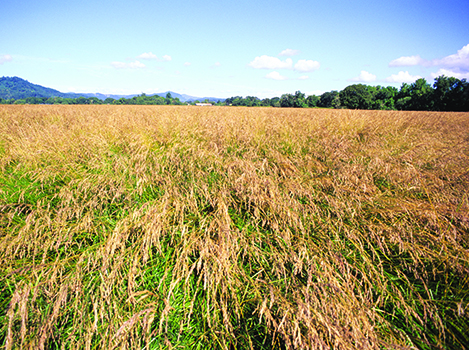Suppliers discuss the underlier for turfseed shortages and high prices.
Gone are the days when turfseed fields dominantly cloaked the surfaces of Willamette Valley, Ore.
Crops such as wheat, corn and soybeans overtake the grounds that once were boasted as the world’s turfseed capital.
Meanwhile, lawn care professionals have been pulling more money out of company bank accounts to pay higher prices for the lesser supply. When will prices drop?
The answer may be never, suppliers say. The reason lies in a span of events stemming from the housing market crash in 2008 and the Great Recession of 2007 to 2009.
The history
Prior to the recession, the annual value of grass seed was more than $500 million in Oregon, according to the Oregon Seed Council. In 2009, that value was nearly split in half to $300 million.
Coinciding with those figures, Bruce Jump, turfseed production manager at WinField Solutions, based in Shoreview, Minn., recalls the housing market booming in the mid-2000s. (Keep in mind, each new house warrants a new lawn.)
“Housing was going crazy,” Jump says. “Construction was going crazy. We could not get enough seed in the ground.”
Then the recession hit hard in 2008, and the housing market plummeted. Going down with it was the number of lawns installed, thus the demand for turfseed declined.
Suppliers, like DLF Pickseed USA, were left with an overhang of inventory, says Leah Brillman, director of product management and technical services at DLF Pickseed.
“Companies ended up having to sell that seed for less than it cost them to buy it,” she says. “Companies lost money. Growers lost money.”
Suppliers began scaling back turfseed production and growers replaced grass seed with crops offering better yields and more money, such as wheat, corn, soybeans, forages, hazelnut, hops and cover crops.
Turfseed suppliers now have run out of their excess supply and growers don’t have plentiful acres set aside to grow their products. Hence, suppliers are struggling to get their product in the ground due to too stiff of competition from the aforementioned crops.
The bottom line: Supply is not meeting demand and end-users, like landscape and lawn care professionals, are paying for it. In Brillman’s words, “Everybody is in a big pickle.
“In order to get our growers to plant seed, we have to offer them a higher price,” she says. “We have to get more money from the customers to offer more to farmers.”
Murray Wingate, marketing manager at LebanonTurf in Lebanon, Pa., says, “That’s the most underlying change for prices remaining higher.”
Suppliers responding
“The competition for acres in Willamette Valley is tougher here than I’ve ever seen because there’s more commodities (replacement crops) for farmers,” says Keith Laxton, service manager at Landmark Turf & Native Seed. “While the demand for grass seed is pretty good, the supply is pretty tight.”
The notion of replacing turfseed wasn’t one that came overnight to growers, though, adds Laxton, who is based out of Albany, Ore.
“In the past few years, those commodities have gotten to levels where farmers can make more money growing those things than they could growing grass seed,” he says.
As a distributor who buys seed from around 10 suppliers, Jump has seen the quandary trickle down to his customers first-hand, saying he’s seen a 30 percent to 40 percent increase in grass seed prices over the past four years.
Slightly adding to the equation of shortages is poor weather conditions, which can negatively affect yields, Wingate says.
With all these considerations working against suppliers, Laxton says, for suppliers to get their product planted, they must be in a customer-service mindset similar to that of a landscape contractor, building strong relationships with growers rather than competing on price because everyone can do that.
“We begin to think of (growers) more as customers than vendors,” Laxton says. “We have to distinguish ourselves with reliable communication.”
Expectations for 2014
Supply, Brillman says, won’t meet demand in 2014, especially for high-quality seed.
“We always say you don’t know what you’ve got until you’ve got it in the barn,” she says. “If we’d hit the correct amount of yield on all the species, we would not be where we are right now.”
Suppliers say in 2014 landscape professionals should plan ahead for shortages of the following varieties:
- perennial ryegrass;
- tall fescues;
- some Kentucky bluegrasses;
- fine fescues; and
- hard fescues.
To combat the shortages, Jump says customers should be placing early orders with their distributors now. Landscape contractors, he says, also should be open-minded to using varieties in higher supply.
Tell distributors what you’re looking for out of the grass, he says, not the specific variety you normally use.
“‘What do you want your seed to accomplish for you?’ Have those agronomic discussions,” Jump says. “The earlier you can have those conversations, then we can get your seed locked in.”
Photo: Lynn Ketchum, Oregon State University


